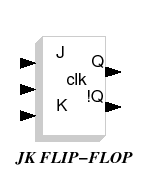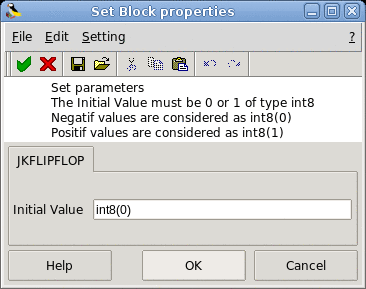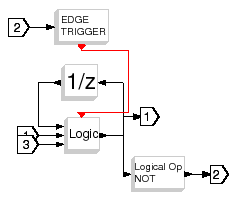

The JK flip flop is the most versatile of the basic flip-flops.
It has two inputs traditionally labeled J and K. When J and K are
different, the output takes the value of J at the next falling edge.
When J and K are both low, no change occurs in the output state,
when they are both high the output will toggle from one state to other.
It can perform the functions of the set/reset flip-flop and has the
advantage that there are no ambiguous states. It can also act as a
T flip-flop to accomplish toggling action if J and K are tied together.
This toggle application finds extensive use in binary counters.
This block is almost used with digital number, the input data type
is int8.
The truth table of this block is
| J | K | Q(t) | !Q(t) |
| 0 | 0 | Q(t-1) | !Q(t-1) |
| 0 | 1 | 0 | 1 |
| 1 | 0 | 1 | 0 |
| 1 | 1 | !Q(t-1) | Q(t-1) |

